Place: Wesley Hall, University of Winnipeg
Address: 515 Portage Ave (Map)
Opened: January 6, 1896 (rededicated Sept.14, 2007)
Architect: Browne & Peters (1896) Corbett-Cibinel (2007)
Cost: $75,000 (1896). $19.2 m (2007).
Background
The province granted a charter to the Methodist Church to create Wesley College in 1877. It took a decade of fundraising and organization until Principal J. W. Sparling of Ontario was hired. He, along with a faculty of two, started classes in the basement of Grace Methodist church. From there, the college moved to a building on Albert Street then to Broadway.
In 1891 a 5.5 acre site at Portage and Colony was purchased and a fundraising campaign began for a permanent home. Construction began on this $75,000 building on March 19, 1894.
The cornerstone was laid on June 26, 1894. Mr. H. A. Massey, chairman of the Massey Harris Company in Toronto and the largest single contributor to the project (at $20,000), was to do the honour but failing health kept him in Toronto. Reverend J. W. Sparling filled in and the silver trowel used to lay the cornerstone was sent to Massey as a momento.
Wesley Hall opened for classes on January 6, 1896. It featured classrooms, a basement gymnasium, convocation hall and dormitories for about 40 students. With electric lights and indoor plumbing it was seen as a model building for the time.The Free Press said that it “...combines solidity with neatness and convenience with artistic finish. One of the most perfectly equipped college buildings in the Dominion.” (Manitoba Free Press, August 7, 1895). To read the Daily Nor'Wester's coverage of the new building (the manitobia.ca site may be offline).
In 1938 Manitoba College and Wesley College merged as United College, affiliated with the University of Manitoba. In 1967 the University of Winnipeg received its charter as an independent institution.
As new buildings were added, most notably Centennial Hall in 1972, university functions spread throughout the growing campus and The Collegiate, a high school division, became an increasing presence in Wesley Hall.
The Collegiate was created within Wesley College in 1873 "... in order to supply matriculation training to such probationers and pre-arts students as had for various reasons not completed their high school education in full" (source). In 1912 the school was moved to the 'Wesley Annex' (Sparling Hall).
A striking feature of the building is the grey sandstone quarried in the Calgary area. The Free Press said it was “... something new in Winnipeg and many will no doubt be curious to observe the effect of its introduction” (Manitoba Free Press, March 21, 1894). That stone facade has been a problem for Wesley Hall.
The opening of the building had to be pushed from September 1895 to January 1896 because the original quarry went bankrupt before the order could be completed.
The stone was laid on edge to provide a textured, more dramatic look. This, however, exposed the grain of the stone to the elements. A later decision to grow ivy over the exterior led to further deterioration as the plant's grippers took hold.
By the late 1990s the stone was crumbling. Nets, and eventually a covered walkway, had to be erected around Wesley Hall protect passers by from falling stone fragments.
Between 2004 - 2007 a $14 million exterior restoration took place, (Corbett Cibinel Architects with Akman Construction & Alpha Masonry). This included replacing the windows, slate roof and a new facade. The original stone is actually still there. The 'bellies' of the old stones were sheared off, an insulating foam was laid over top and the new stone, from a quarry in Wallace, Nova Scotia, built over top.
In the initial stages of the restoration the cornerstone laid by Reverend Sparling in 1984 was removed. University President Lloyd Axworthy and president Emeritus Dr. Harry Duckworth. Items inside the cornerstone included the 1893-94 Wesley College Calendar, editions of the daily newspapers, minutes of the meeting authorizing the construction and a list of donors. (Source - page 6.)
As exterior renovations were finishing up interior, a $5.2 million interior renovation got underway. This included the restoration of Convocation Hall.
Convocation Hall was original to the building but in 1969-70 the University's Theatre Association began using it regularly as a performance space. By 1972 the space was blackened out to become the university's theatre department stage.
At a cost of $1 million, half of that donated by Dr. Douglas Leatherdale, Convocation Hall was restored to its former glory and on September 14, 2007 was rededicated.
A much beloved space was Tony's Canteen, named for Tony Kozyra, a university handyman who took over the basement tuck shop in the 1920s and ran it until 1965. Dr. Gerald Bedford recalled in a May 7, 1971 Free Press story:
"Over the years he gained a place of affection and esteem among students and faculty alike . Tony expressed his fondness for students by consoling them during exam time, and during their periods of homesickness and illness."
When Tony's moved temporarily to Ashdown Hall in 67 the university tried to change the name but students insisted that the place be called Tony's. Eventually, administration gave in and a new "Tony's Canteen" sign was ordered for the space.
Tony's closed in 2008 during the renovation, though according to the Collegiate's capital campaign website there are plans to reopen it in the basement of Wesley Hall. (For more on Tony's, page 28.)
Related:
515 Portage Avenue Historic Buildings Committee
Wesley Hall Winnipeg Building Index
Project News Release U of W June 19 2007
The Golden Jubilee of Wesley College 1938
A history of the University of Winnipeg
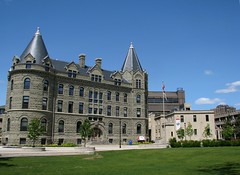
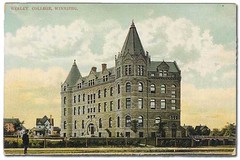


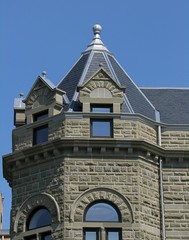

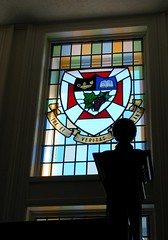
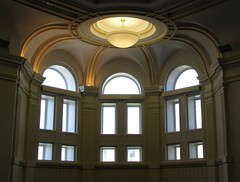

One small correction: Tony Kozyra took over Wesley College's restaurant in 1936, and was not affiliated with the College prior to that. Robert Neill was first employed there when it opened in 1923; George Black handled the restaurant for the next year when Mr. Neill took work as one of the College's caretakers. Tony came along after that.
ReplyDelete(George Black took over in 1935, that is.)
DeleteThanks, I will make those changes !
ReplyDelete